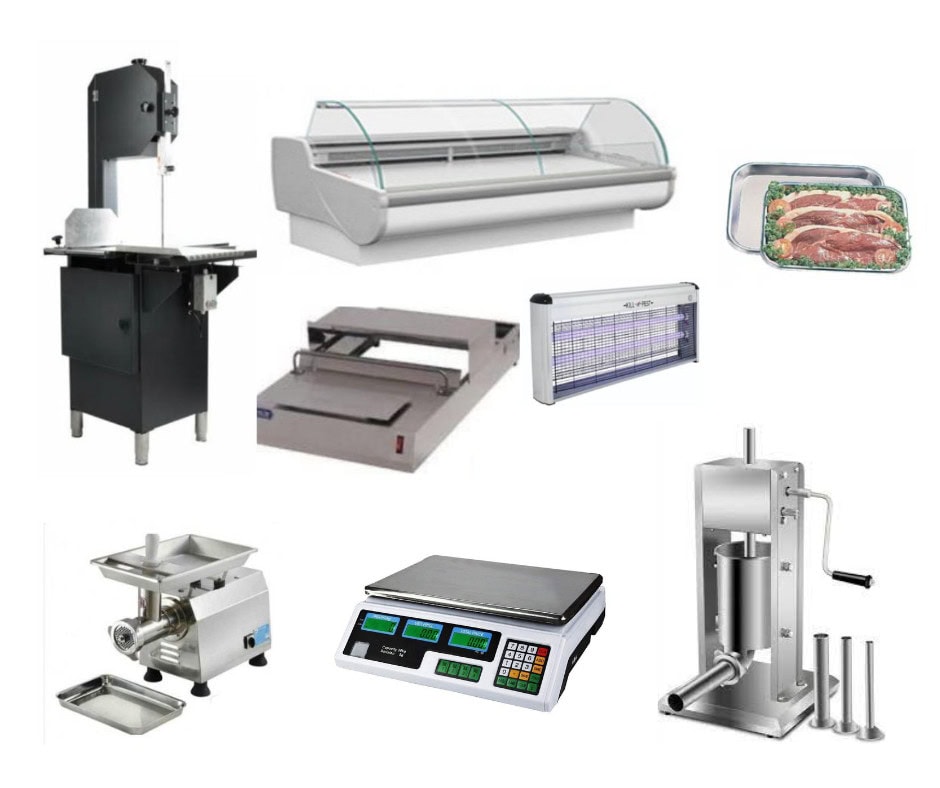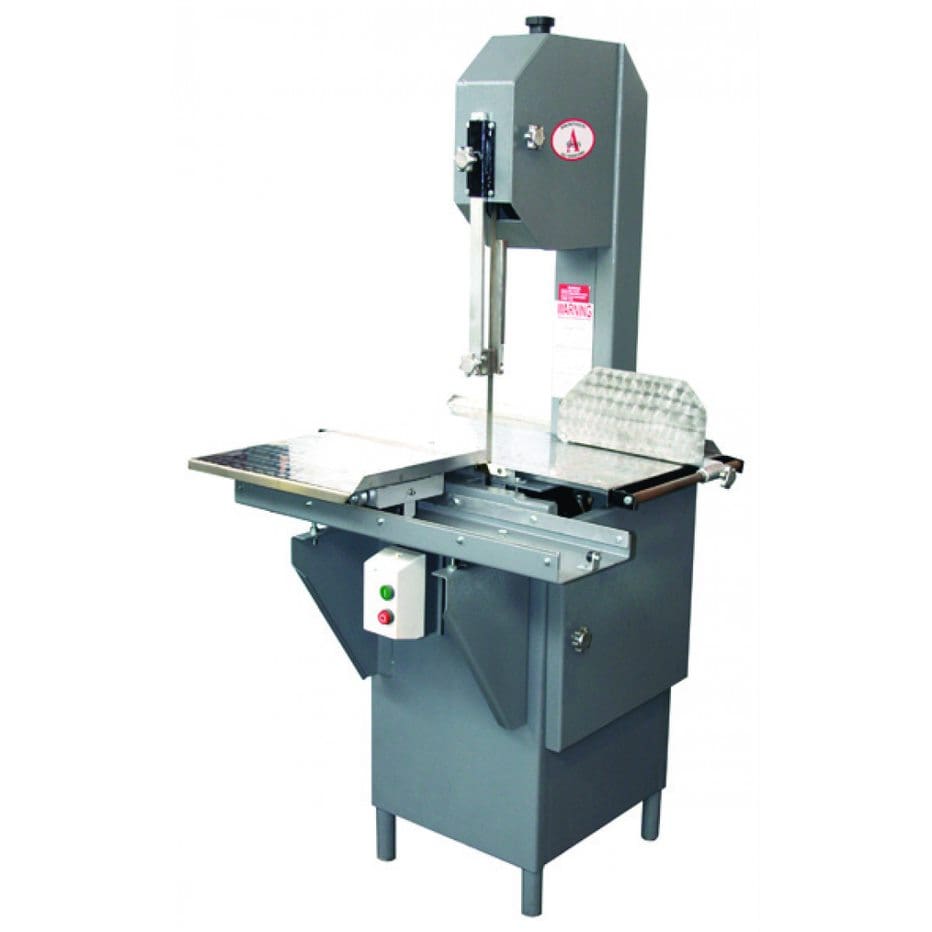A Starter’s Guide to Butchery Equipment Maintenance
The Ultimate Guide to Preserving Your Butchery Devices for Durability
Maintaining butchery equipment is important for guaranteeing security and efficiency in meat processing. Regular maintenance not just improves efficiency however also minimizes the risk of crashes. From day-to-day cleansing routines to professional maintenance, every facet plays a crucial function in equipment longevity. Recognizing these techniques can considerably affect the operational success of a butchery. What actions should one prioritize to achieve ideal efficiency and security?
Understanding the Importance of Tools Maintenance
Although frequently overlooked, the upkeep of butchery devices is essential for assuring both security and efficiency in the meat handling industry. Normal assessments and servicing of blades, saws, and mills are important to avoid crashes and assure peak efficiency. Dull blades can bring about greater pressure being used, boosting the threat of slips and injuries. In addition, well-maintained tools operates much more effectively, lowering waste and improving productivity.Neglecting upkeep can result in expensive fixings or replacements, which affect an organization's profits. By sticking to a set up maintenance plan, butchers can expand the lifespan of their tools and machinery. This aggressive approach not only ensures conformity with health and security guidelines yet also promotes a workplace concentrated on top quality and accuracy. Eventually, understanding the importance of equipment upkeep is vital for any butchery aiming to prosper in an affordable market while focusing on the well-being of workers and consumers alike.
Daily Cleaning and Sanitization Practices
Maintaining a clean and disinfected office is important for butchers, as it straight influences food safety and quality. Daily cleaning practices need to begin with the removal of any kind of food debris and deposits from all surfaces, consisting of cutting boards, counter tops, and devices. Butchers need to use suitable cleaning representatives that efficiently remove microorganisms while being safe for food-contact surfaces.After cleaning, extensive sanitization is basic. This entails applying a food-safe sanitizer to all surfaces, allowing ample get in touch with time to guarantee efficiency. Butchers need to additionally take note of tools, tools, and tools, making sure they are cleaned, washed, and sanitized after each use.In addition, appropriate handwashing methods need to be followed, as hand hygiene is significant in avoiding cross-contamination. By carrying out these day-to-day cleaning and sanitization methods, butchers can keep a safe and efficient workplace, ultimately boosting the total top quality of their products.
Developing and Sharpening Your Knives
Honing and honing blades is a vital ability for butchers, as sharp tools enhance performance and precision in cutting. Routine upkeep of knives not just improves performance however additionally ensures security during food prep work. Butchers should comprehend the difference between honing and sharpening; honing removes material to restore the blade's edge, while developing aligns the edge for top cutting.To develop knives, making use of a whetstone or professional honing solution is recommended. It is vital to preserve the proper angle during honing to accomplish a regular side. Refining can be finished with a developing steel, which must be used regularly to maintain knives in prime condition.Butchers should additionally know the material of their knives, as various kinds require specific care techniques. A well-kept blade will cause much less exhaustion and better results, making honing and honing an important component of butchery equipment care.
Examining and Maintaining Saws and Mills
Regular assessment and upkeep of saws and grinders is essential for assuring peak efficiency and durability of butchery tools. Operators must routinely examine saw blades for wear and damage, seeking nicks or monotony that can impact reducing efficiency. Cleaning the blades after each use assists prevent build-up and corrosion, boosting their lifespan.Grinders also call for attention; operators must evaluate grinding plates and blades for indicators of wear or imbalance. Regularly oiling moving parts assurances smooth procedure and reduces possible breakdowns. It is important to tighten up all screws and bolts to avoid vibrations that can bring about mechanical failure.Additionally, checking electrical connections and cords for fraying or damage is important for safety and security. By adhering to a positive maintenance schedule, butchers can decrease downtime and prolong the life of their saws and grinders, ultimately sustaining a more effective and effective workplace.
Correct Storage Space Strategies for Butchery Tools
Correct storage space strategies for butchery devices are necessary for protecting their performance and safety and security after maintenance tasks have actually been finished. Correct organization lowers the danger of damage and warranties that tools are easily offered when required. It is advisable to store blades in protective sheaths or magnetic strips to stop dulling and crashes. Cutting boards should be cleaned up and saved upright to enable air circulation, preventing dampness buildup.Saws and mills should be maintained in designated storage space locations, preferably in a dry, temperature-controlled environment to avoid corrosion. Device racks can provide simple access while maintaining tools off surfaces, decreasing clutter. Additionally, normal checks on kept devices for signs of wear or damages will certainly assist maintain their problem. By carrying out these storage methods, butchers can expand the life of their equipment and ensure a safe workplace.
Arranging Normal Specialist Maintenance
Arranging routine expert servicing is essential for keeping the effectiveness and durability of butchery tools. Experts recommend that maintenance be carried out at least annually, though even more regular checks might be needed based upon usage levels. This proactive approach aids stop costly malfunctions and assurances conformity with health and wellness criteria.
Importance of Specialist Maintenance
While the long life and effectiveness of butchery devices are necessary for functional success, lots of services ignore the requirement of expert maintenance. Normal expert maintenance plays a crucial duty in guaranteeing that devices operates at peak efficiency. Professionals possess specialized understanding and abilities, permitting them to identify issues that may not show up during regular checks. This proactive strategy not just avoids unanticipated malfunctions however additionally expands the life expectancy of expensive equipment. Additionally, professional upkeep aids preserve conformity with health and security policies, guarding both employees and consumers. By purchasing professional servicing, butchers can boost efficiency, decrease repair expenses, and cultivate a safer working setting, ultimately contributing to the overall success and credibility of their company.
Advised Maintenance Frequency
Developing a regular maintenance timetable for butchery devices is essential for keeping peak performance and reliability. Normally, butchers should go for specialist maintenance every six to twelve months, depending upon equipment use and workload. High-volume operations might require even more frequent checks, while smaller sized establishments can stick to the much longer interval.Regular maintenance helps identify potential problems prior to they rise, ensuring safety and operational efficiency. It is recommended to speak with supplier guidelines for details suggestions regarding each tool. In addition, keeping detailed records of maintenance days and performed tasks can aid in tracking equipment health and wellness and planning future maintenance. By sticking to a recommended maintenance frequency, butchers can considerably enhance the durability and effectiveness of their tools.
Recognizing Indications of Deterioration
Recognizing indications of wear and tear in butchery equipment is essential for preserving peak performance. By utilizing aesthetic evaluation methods, operators can identify possible problems prior to they rise. Furthermore, keeping in mind any type of efficiency anomalies can educate needed adjustments to the routine maintenance find more info routine.
Visual Examination Techniques
Aesthetic assessment functions as a vital very first line of protection in determining wear and tear on butchery devices. Regularly taking a look at devices and equipment permits operators to spot prospective issues before they escalate. Secret areas to concentrate on include blades, joints, and surface areas for indications of deterioration, monotony, or cracks. Checking manages and grips assurances they are safe and devoid of damages, which can endanger safety and security. In addition, analyzing electrical elements for fraying wires or loosened connections is vital. A detailed aesthetic assessment should be carried out consistently, ideally after each usage, to keep peak performance and prolong the life of the equipment. By being vigilant, butchers can guarantee their tools stay in prime problem and click to investigate secure their operational effectiveness.
Efficiency Anomalies
Several subtle efficiency anomalies can show damage on butchery devices, which may compromise effectiveness and security. As an example, a visible reduction in cutting sharpness can indicate that blades are plain and require interest. Butchery Equipment. Devices might likewise display uncommon vibrations or noises, recommending imbalance or inner damages that can influence performance. Furthermore, inconsistent meat texture or irregular cuts may indicate that equipment is not operating at its finest. Raised operational temperatures can indicate overheating electric motors or rubbing between parts, risking potential failure. Routinely checking these indications is essential, as they can bring about even more substantial concerns if left unaddressed. Prompt acknowledgment of these anomalies is essential for keeping capability and making sure a safe workplace in butchery procedures
Regular Upkeep Arrange
Developing a normal maintenance timetable is necessary for determining indicators of deterioration on butchery tools, as positive treatment can stop expensive repair services and assure peak efficiency. Routine assessments should be carried out to look for issues such Website as boring blades, loose installations, or uncommon noises. Setting up maintenance jobs, such as honing blades or oiling relocating parts, assurances that tools continues to be in prime problem. Maintaining a maintenance log can help track the frequency of solution and the details jobs executed. Furthermore, being conscientious to devices performance throughout daily operations can inform operators to possible issues before they escalate. By prioritizing an organized upkeep regimen, butchers can expand the lifespan of their equipment and preserve effectiveness in their operations.
Frequently Asked Concerns
How Commonly Should I Change My Butchery Equipment?
The frequency of replacing butchery tools varies based on use and upkeep. Generally, blades might require replacement each year, while bigger equipments might last several years, demanding normal evaluations to identify when substitute is vital for peak efficiency.
Can I Use Family Cleansers on My Butchery Tools?

What Are the very best Products for Butcher Knives?
The finest products for butcher knives usually consist of high-carbon stainless-steel for toughness, edge retention, and deterioration resistance. Various other choices include ceramic for lightweight usage and Damascus steel for aesthetic appeal and strength.
Is It Necessary to Oil My Meat Saw?

Exactly How Can I Protect Against Corrosion on My Equipment?
To stop rust on tools, routine cleansing is essential. Using a slim layer of oil after use creates a safety obstacle (Butchery Equipment). In addition, keeping tools in a completely dry atmosphere helps decrease moisture direct exposure and decreases corrosion formation